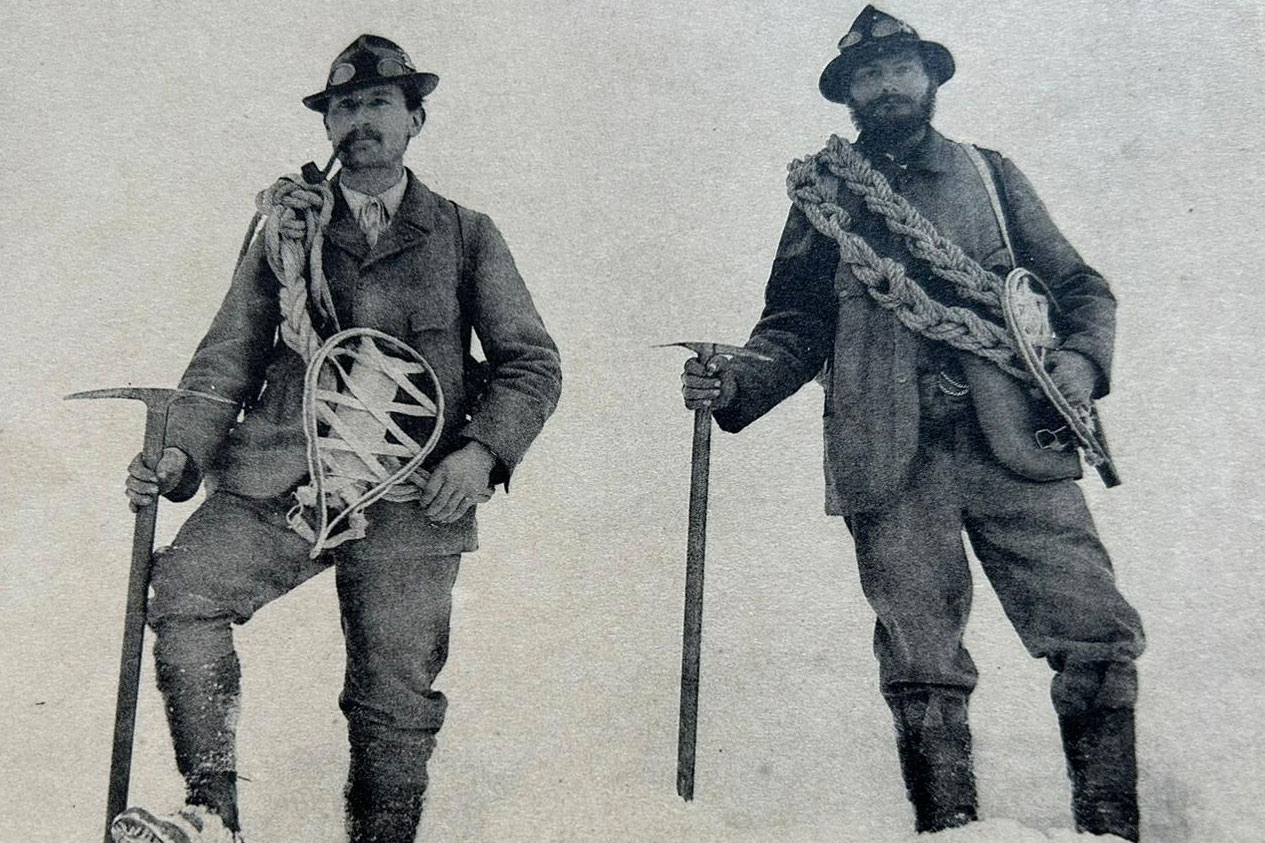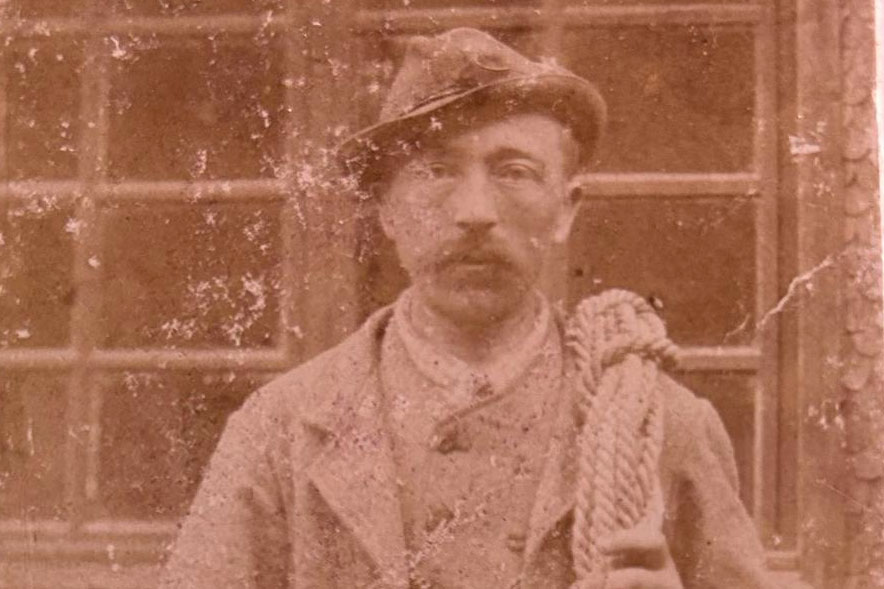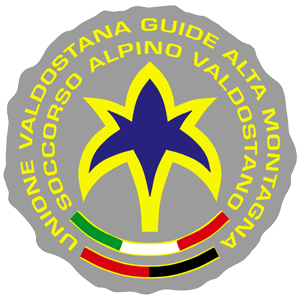Monte Rosa, with its 21 4000m peaks has fascinated generations of poets, writers, painters, naturalists and mountaineers. Known over the centuries with different names, it appears in the oldest documents as Nelkron or Nelikron, in other words crown, but it owes the origin of its name to the ice or rather to the glacier. Rosa comes from the Lombard term Hrosa, from which Roise, Roises and Royses, whose meaning is mountain of ice. Mount Boso, a transliteration of Roise, is described by Piero Azario in 1356 as “mountain of Boxeno which overlooks all the mountains of Lombardy and from which snow and ice never withdrew from the origin of the world”. Monte Boso, the highest in Italy and constantly covered with snow and inaccessible” is instead indicated by Pietro Biondo in 1451. For Leandro Alberti, Monte Bioso is the highest in the Novara area, but not the highest mountain in the Alps. But it is the presence of Leonardo da Vinci in the valley in the early 16th century who excites us when we re-read his words contained in the Leicester code “And this will see as I saw, who will go above Monboso yoke of the Alps which divide France from Italy which mountain it has its base which gives birth to the 4 rivers which run all of Europe in 4 opposite aspects, and no mountain has its base in such a height; […] and I saw the air above me dark and the sun that strikes the mountain be much brighter here than in the low plains, because less thickness of air is interposed between the top of that mountain and the sun. ”
However, the first ascent of Monte Rosa of which we know the facts dates back to mid-August 1778, when Valentin and Joseph Beck, Joseph Zumstein, Nicolas Vincent, Sebastian Linty, Étienne Lisco and François Castel, young climbers from Gresso, decided to look for the legendary ” Lost Valley”, challenging the unexplored, they reached the hill that we now call Colle del Lys. Here they stopped at 4178 m and baptized the place Roccia della Scoperta. And it was still the inhabitants of Gressoney who climbed the first peaks of Monte Rosa in the early 1800; in 1819 Nicolas and Joseph Vincent conquered the peak that took their name or the Vincent Pyramid.In the same year Nicolas Vincent and Joseph Zumstein reached the 4561 meters of what is now known as Punta Zumstein.
The birth of mountaineering in the Alps has its roots in the second half of the 19th century, with the first organized ascents of the most famous and sought-after peaks. An event of epic significance for the high mountains, which profoundly affected and changed the daily life of Gressoney, Ayas, Alagna and the valleys of Monte Rosa.
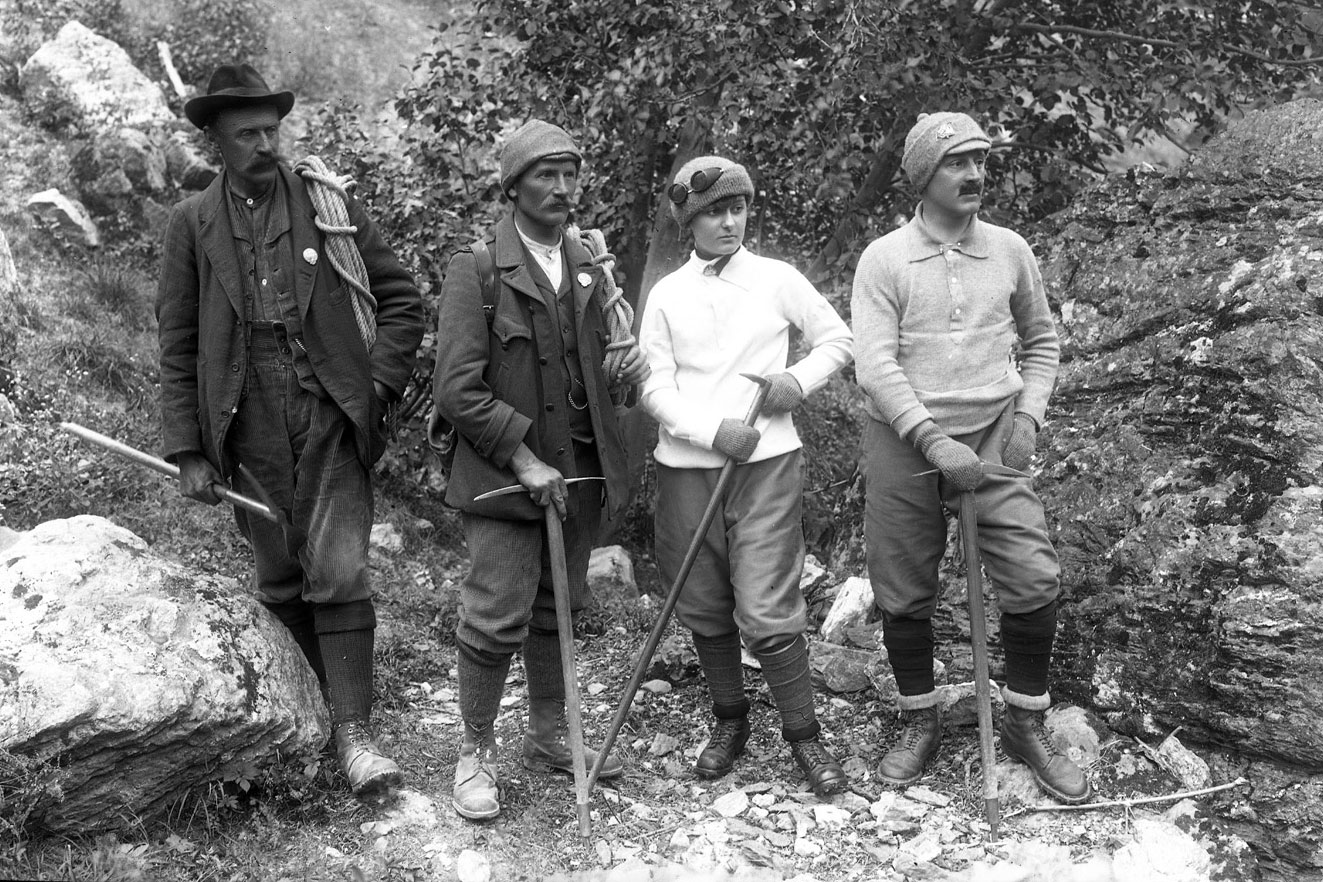
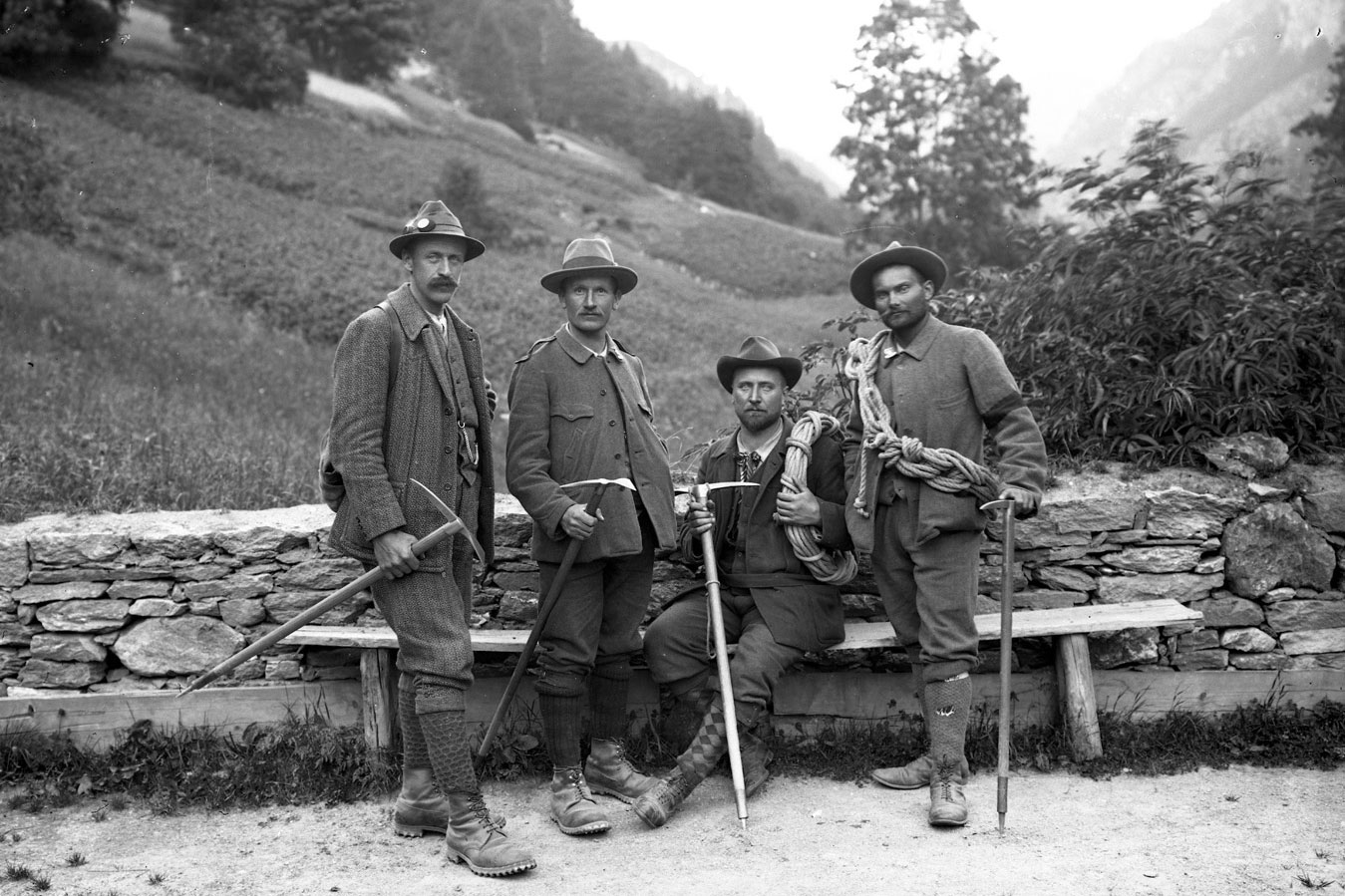
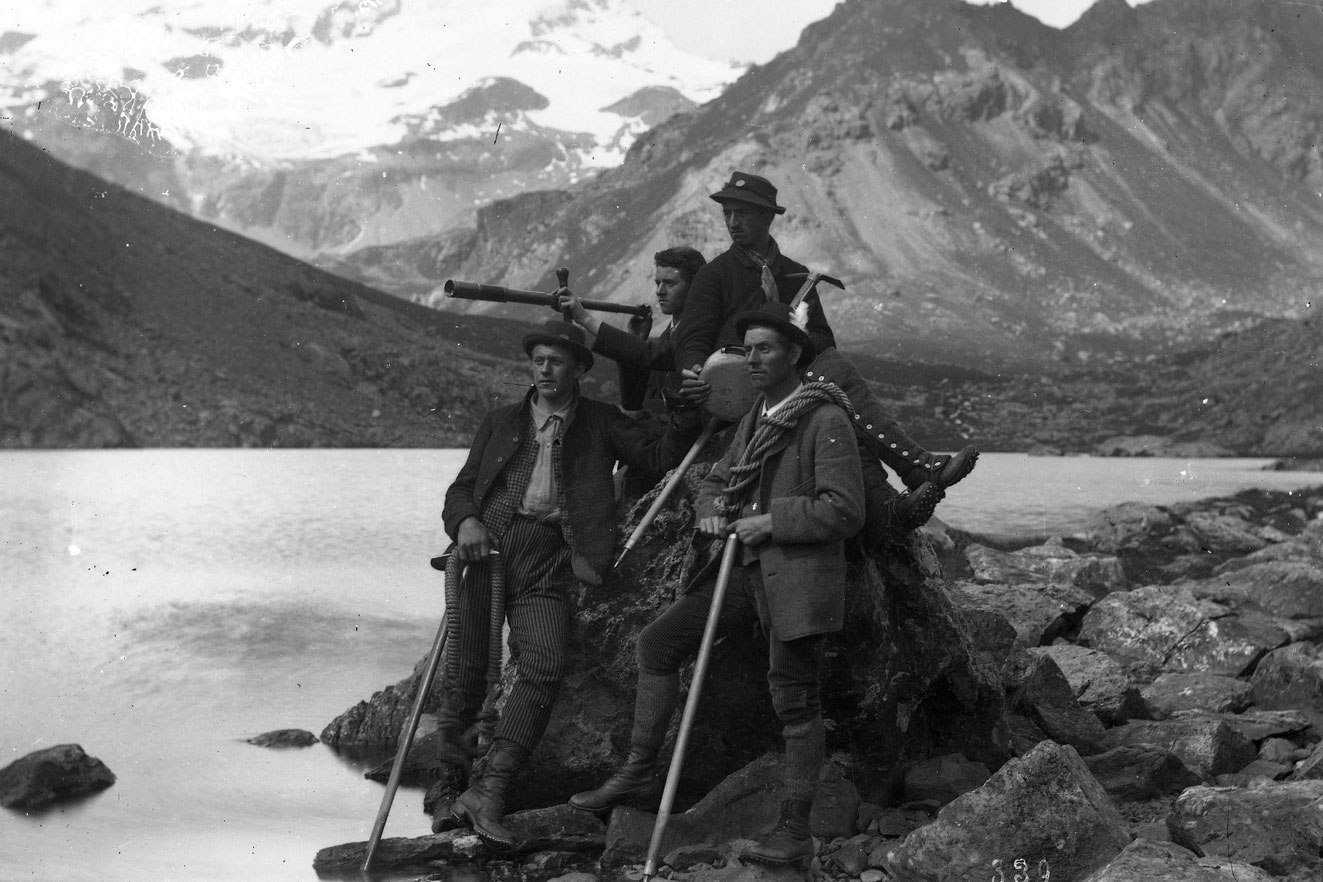

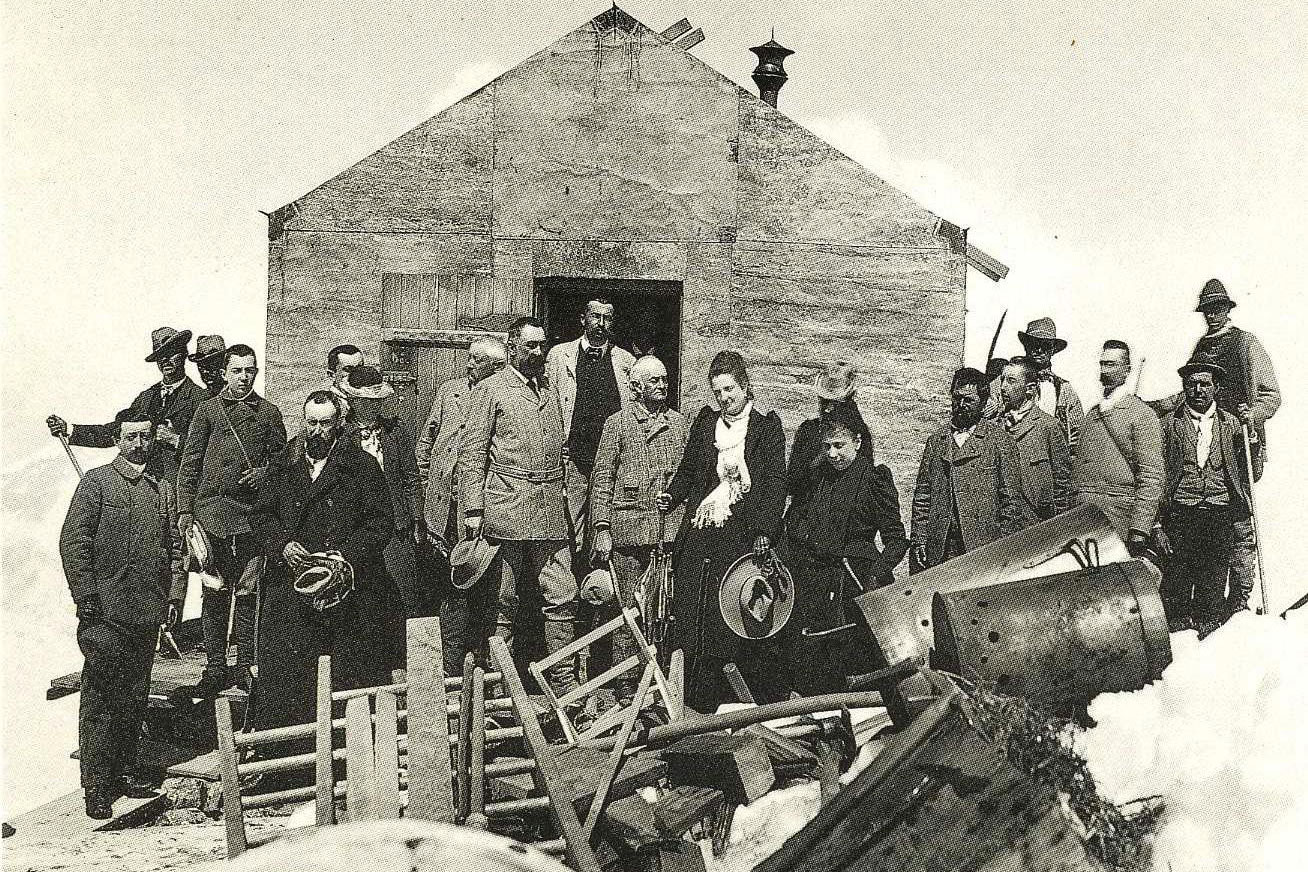
The first lodges at high altitudes and the first hotels in the village were built, the urban aspect of the small towns perched on the mountainsides was transformed and men, from simple inhabitants, became aware of their own experience and developed new professions. Thus were born the figures of porters and mountain guides of Monte Rosa.
On 4th 5th and 6th August 1877 at the Hôtel du Mont Rose in Gressoney the convention of the newborn CAI (founded by Quintino Sella in 1863) was held, which was attended by all the prominent personalities of mountaineering of those years, who were in the town for a memorable party. But above all the participants in the event we want to remember the unforgettable abbé Gorret, free spirit of Monte Rosa, who was able to distinguish himself on this occasion too, when called to make his speech, he said “the best speeches at table are those which they do”. Recognized by the international conference in Gressoney, the mountaineering season took off rapidly and in 1893 the Gressoney guides accompanied Queen Margherita of Savoy to the inauguration of the highest observatory hut in Europe, which on that occasion took the name of Capanna Margherita
In 1902 we remember the first ascent of the southeast face of the eastern Lyskamm by the guides Francesco Curtaz, Giacomo David and Alberto Lazier. On 5th September 1903 the guides Antonio Curtaz and Giovan Battista Pellissier together with the Countess Grace Filder of Campello della Spina opened the route on the southeast face of eastern Lyskamm, now known as via Filder. A great mountaineer, an adventurous and fascinating character, Filder usually stayed in Gressoney, where she climbed numerous peaks with the guide Carlo Squindo. Of the guides of Gressoney, in the report to the Cai of December 1903, he wrote: “the guides congratulated me with a good handshake. They did not ask for the honor of embracing me as the twenty-four less polite guides of the bride of Mont Blanc had done Mademoiselle D’Angeville”.
On 17 January 1907 the guides Antonio Curtaz Alberto and Edoardo Lazier with the great mountaineer, ethnologist, explorer and Himalayan from Biella Mario Piacenza were the protagonists of the first absolute (and first winter) on the Perazzi ridge at Lyskamm, which was followed, the next day, by the first winter ascent of Punta Dufour from Colle Zumstein. In 1911 the guide Antonio Welf and the mountaineer Carlo Fortina secured the first Italian climb up the north face of Lyskamm and the first ascent of the southwest ridge of Castore.
The Gressoney guide company was founded in 1963 and has been operating continuously since then in the mountains at home and in the world.
